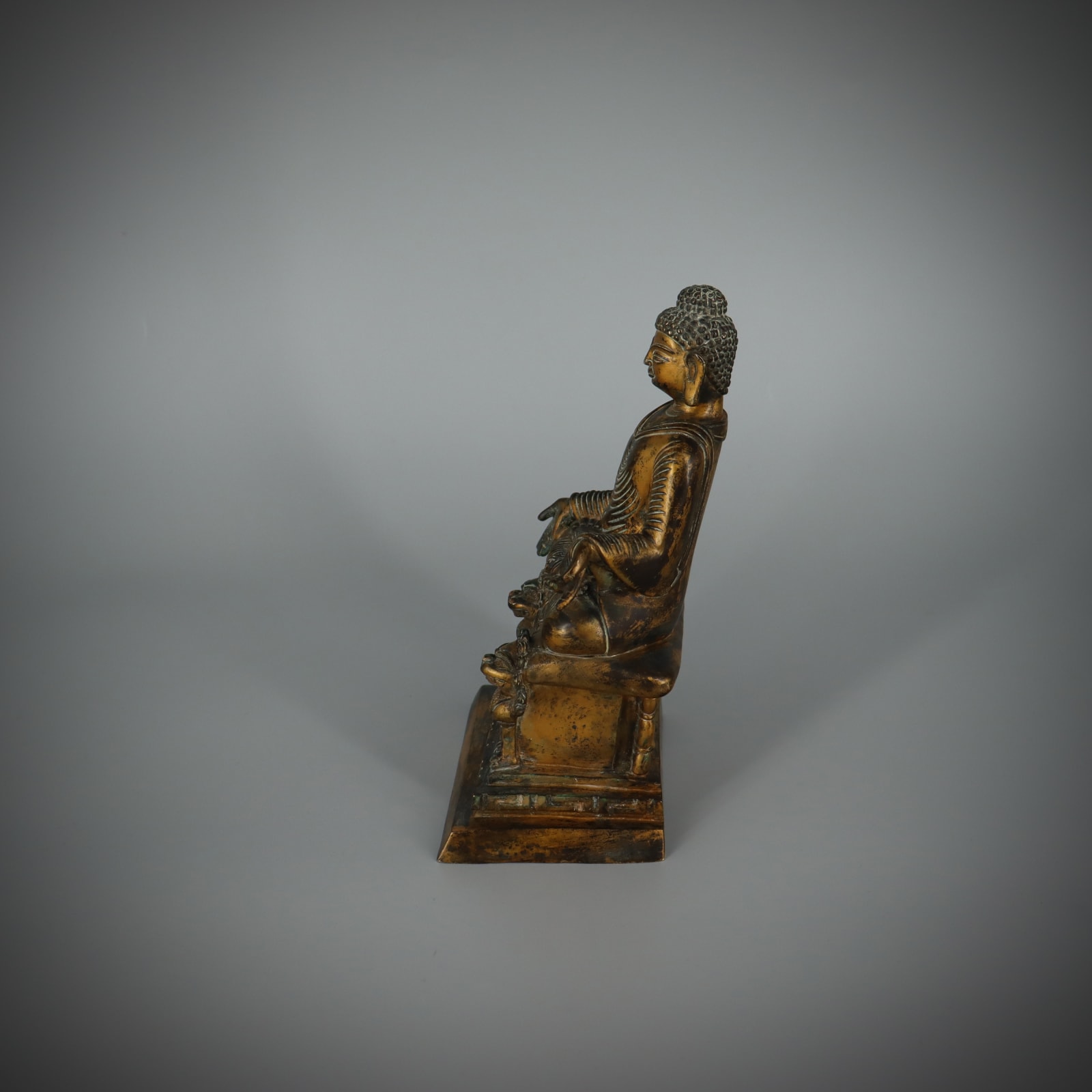Sino Tibetan Bronze Buddha, 17th to 19th century AD
Bronze
21.5 x 12.5 x 8.5 cm
8 1/2 x 4 7/8 x 3 3/8 in
8 1/2 x 4 7/8 x 3 3/8 in
GM.0061
Further images
The Buddha sits on a tall square throne, whose base is decorated with geometric patterns and is supported by the two snow lions. Snow lions are celestial animals typical of...
The Buddha sits on a tall square throne, whose base is decorated with geometric patterns and is supported by the two snow lions. Snow lions are celestial animals typical of Tibetan culture and Tibetan buddhist iconography. They are the protectors of Buddha and are often represented as holding up the Buddha's throne (one on the left and one on the right of the throne). They are particularly apt at matching the state of elevation of the Buddha because in Tibetan mythology their feet never touch the ground, but they spend their entire existence leaping from mountain peak to mountain peak.
The Buddha is represented in the Vajrasana, also called the adamant , lotus, or diamond posture. In this posture the Buddha sits with the legs folded over each other with both soles of the feet turned upward. The Buddha is therefore represented in the receiving position, during meditation. He is clothed with a garment whose rich folds recall Gandharan art and its outstanding synthesis of Classical and Asian artistic elements. The typical traits of the iconography of the Buddha are evident in the eyes with rich brows suggesting meditation, the straight nose and beautifully cut lips with a subtle smile. The topknot, known as ushnisha, symbolises the Buddha’s spiritual wisdom and enlightenment. The elongated earlobes, are a reference to the historical Buddha’s former wealth before enlightenment, and are another distinctive feature of Buddhist iconography. The Tibetan master craftsman represented the Buddha in its state of serenity and elevation. It is still possible to see in the care with which the statue was realised the great faith and devotion of its creator.
The Buddha is represented in the Vajrasana, also called the adamant , lotus, or diamond posture. In this posture the Buddha sits with the legs folded over each other with both soles of the feet turned upward. The Buddha is therefore represented in the receiving position, during meditation. He is clothed with a garment whose rich folds recall Gandharan art and its outstanding synthesis of Classical and Asian artistic elements. The typical traits of the iconography of the Buddha are evident in the eyes with rich brows suggesting meditation, the straight nose and beautifully cut lips with a subtle smile. The topknot, known as ushnisha, symbolises the Buddha’s spiritual wisdom and enlightenment. The elongated earlobes, are a reference to the historical Buddha’s former wealth before enlightenment, and are another distinctive feature of Buddhist iconography. The Tibetan master craftsman represented the Buddha in its state of serenity and elevation. It is still possible to see in the care with which the statue was realised the great faith and devotion of its creator.













